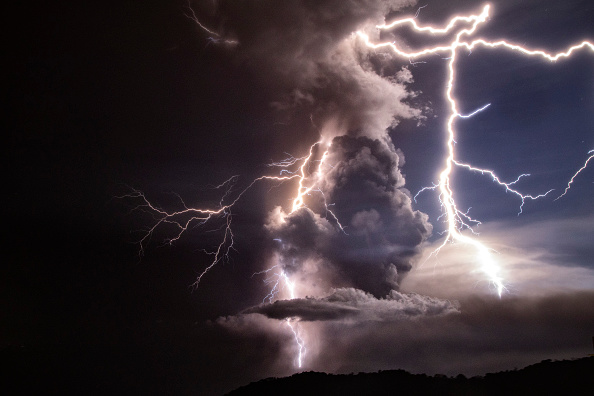By Frank Kamuntu
A lightning strike killed two pupils of Akorikeya primary school and injured 12 others in Abiliyep sub-county, Amudat district in northern Uganda.
The pupils aged between 13 and 15 were struck on Friday while playing in the school compound during the heavy downpour at around 5:30 pm according to George Owanyi, Amudat resident district commissioner (RDC).
Owanyi said that the injured pupils are currently admitted and are responding to treatment. This incident comes nearly two months after lightning struck a nurse and a cleaner at Kaabong hospital in Kaabong district.
Lightning is a dazzling natural phenomenon that occurs during thunderstorms. When electrical charges build up in the atmosphere, they discharge in a brilliant flash of light, creating lightning bolts. These bolts can be awe-inspiring and sometimes a little frightening.
Lightning is a fascinating natural phenomenon. Here’s how it happens:
- Formation in Storm Clouds: Lightning begins as static charges within a rain cloud. Turbulent winds inside the cloud lift water droplets to great heights, where the colder atmosphere freezes them into ice particles.
- Charge Separation: Meanwhile, downdrafts push ice and hail down from the top of the cloud. When the ice particles going down meet the water droplets coming up, electrons are stripped off. This process results in a cloud with a negatively charged bottom and a positively charged top.
- Electrical Fields: These electrical fields become incredibly strong, with the atmosphere acting as an insulator between them in the cloud. When the strength of the charge overpowers the insulating properties of the atmosphere, Z-Z-Z-ZAP! Lightning occurs.
- Path to Ground: As the storm moves over the ground, the strong negative charge in the cloud attracts positive charges in the ground. A “stepped leader” of negative charge descends from the cloud, seeking a path toward the ground. When it gets close, a positive charge (called a streamer) reaches up to meet it, resulting in the visible lightning stroke.
- Thunder: In a fraction of a second, lightning heats the air around it to incredible temperatures—as hot as 54,000 °F (30,000 °C). The rapid expansion of heated air creates shockwaves, which we perceive as thunder.
Have An Advert Or Article You Want Us To Publish? WhatsApp: +256760530830.

